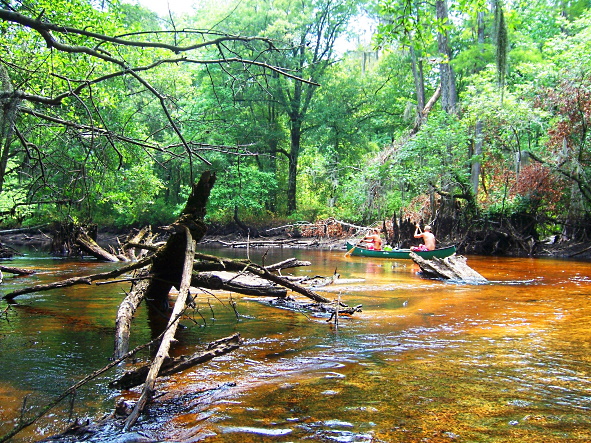Stream Conservation
South Carolina has 30,000 miles of streams that flow through our cities, towns, and neighborhoods. For many of us, childhood memories include the adventures of fishing, wading, or swimming in a nearby creek; and early encounters with wild creatures and nature’s beauty occurred while exploring the margins of a stream.
Our state’s waterways provide habitat for wildlife and a place for us to recreate and enjoy. The protections of these waterways are essential in maintaining clean water too.
How Can You Help Protect Our Waterways
- Properly dispose of your trash and recycling. Trash inadvertently winds up in our creeks, streams, rivers and reservoirs and later makes its way to the ocean. Litter can entangle wildlife inhibiting their natural behaviors that allow them to feed, shelter or migrate. Litter can also become a human health hazard in the form of microplastics in our drinking water. Recycle when you can or utilize reusable containers to eliminate single use plastics.
- Be an active member of your community and participate in litter pickups, such as Beach Sweep/River Sweep, or simply report litter violations when you witness these events.
- Reduce polluted runoff. This can include anything from preventing soil erosion on your property, inspecting your septic tank system annually, applying lawn and garden chemicals sparingly according to label, dispose of oil and household chemicals appropriately by contacting the Department of Health and Environmental Control.
- Protect riparian buffers. If creeks or rivers run through or adjacent to your property, leave vegetative buffers along the waterway; avoid mowing to the water’s edge. Besides providing protection and habitat for wildlife, the vegetation along a waterway helps reduce streambank erosion and sedimentation in our water. Riparian buffers also improve water quality by filtering nutrients and other pollutants, as well as trapping sediments. Additionally, areas adjacent to a stream, known as the floodplain, are important to dissipate water during a flood event. A healthy floodplain with vegetation and forested riparian buffers help reduce a stream or river’s energy or velocity assisting to slow-down floodwaters and reduce damage to property.

